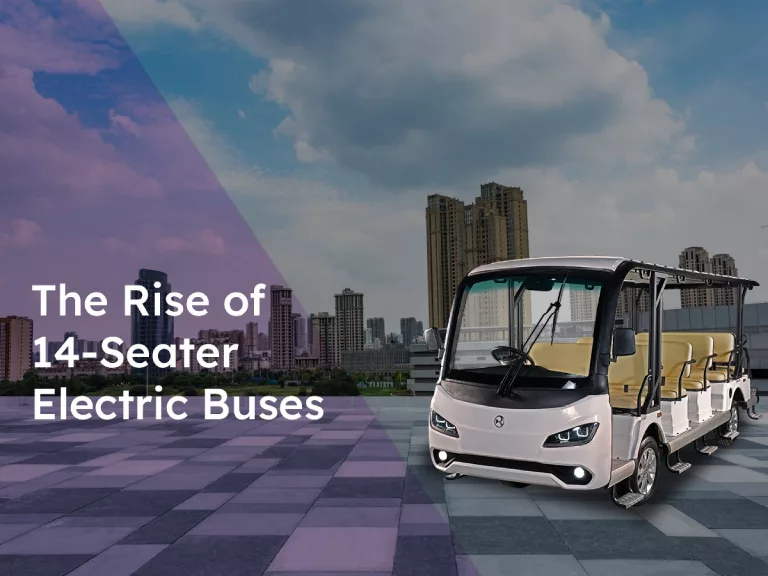In the landscape of transportation, the emergence of 14-seater electric buses represents a transformative shift towards sustainability and overall performance. In this exploration, we are going to delve into the evolution, generation, economic implications, and societal impact of 14-seater electric powered powered buses, elucidating their characteristic in reshaping mobility.
The Environmental Imperative:
Electric buses have emerged as a compelling answer, offering zero tailpipe emissions and reduced dependence on fossil fuels. The usage of 14- Seater Electric Buses in your campus or environment assures you the practice of sustainability and pollution – free environment.
Technological Advancements:
The evolution of the battery has been instrumental inside the adoption of electrical buses. Lithium-ion batteries, with their improved power density and durability, have made electric powered motors more viable and rate-effective. Furthermore, advancements in regenerative braking structures, and car-to-grid integration have superior the efficiency and overall performance of electrical buses. These technological innovations have not best prolonged the range and reliability of electric buses however have additionally reduced operational fees, making them increasingly competitive with conventional diesel or gasoline-powered vehicles.
Economic Considerations:
While the value of electrical buses can be higher than that in their fossil fuel counterparts, the total price of possession over the lifespan of the car tells a unique tale. Electric buses boast decreased operating and protection prices, because of their simplified shifting elements. Moreover, declining battery fees and government incentives for electrification initiatives are making electric buses more economically attractive to transit organizations and operators. By investing in electric powered buses, improve fiscal sustainability.

Impact on Urban Mobility:
The compact size and seating potential of 14-seater electric buses lead them to be nicely-suitable for a variety of in-campus navigations. From trip services and remaining-mile connectivity to neighborhood routes, these vehicles provide bendy and efficient transportation answers. Furthermore, with the aid of supplying sustainable transit alternatives, 14-seater electric powered buses can help alleviate for mobility
Societal Implications:
Beyond their environmental problems, 14-seater electric buses have considerable societal implications. By prioritizing public transit and lowering vehicle dependency, cities can foster greater inclusive and equitable transportation systems. Electric buses offer available and inexpensive mobility alternatives for people of all socioeconomic backgrounds, bridging the gap among city centers and underserved neighborhoods. Moreover, through selling energetic transportation and reducing greenhouse fuel emissions, electric powered buses make contributions to public health enhancements and beautify the general livability of towns.
Conclusion:
The rise of 14-seater electric buses represents a paradigm shift in city transportation, offering a glimpse into a future of cleaner, greener, and extra sustainable mobility. With their zero-emission operation, technological improvements, and economic viability, those compact electric powered vehicles are poised to revolutionize the manner people move inside towns. By having innovation, investing in infrastructure, and prioritizing sustainability, cities can harness the potential of electric buses to create colorful, resilient, and inclusive urban environments for generations to return. As we navigate the challenges of the 21st century, 14-seater electric powered buses stand as a beacon of hope, using us towards an extra sustainable and equitable future.




